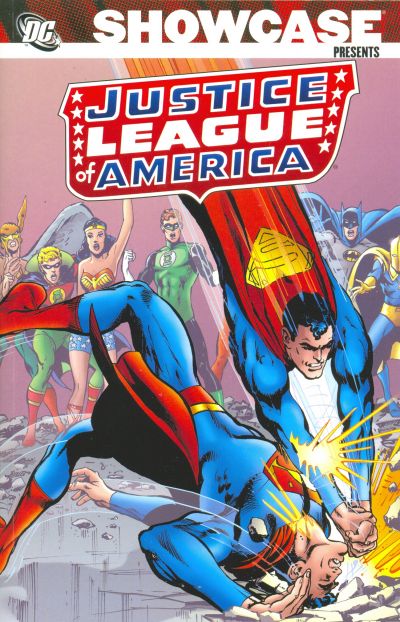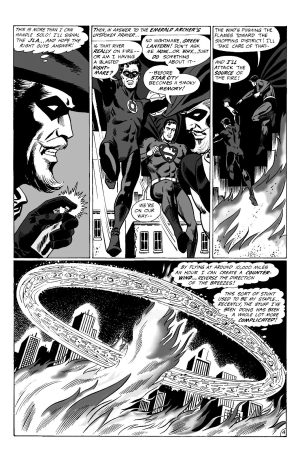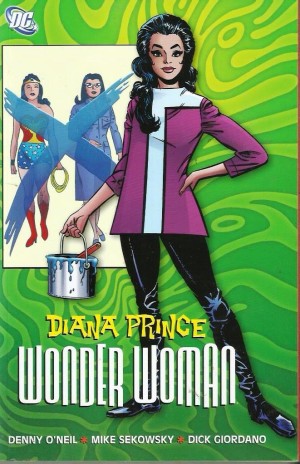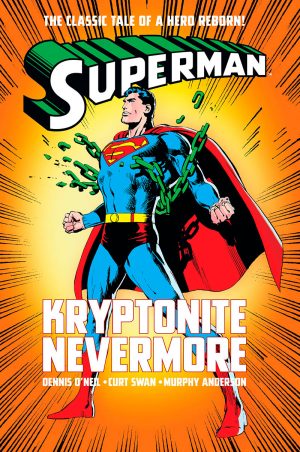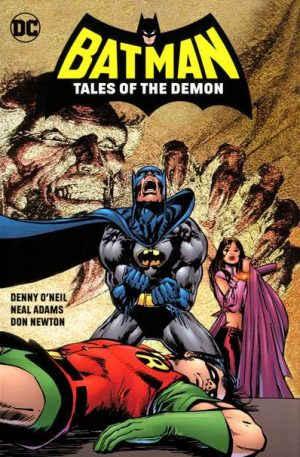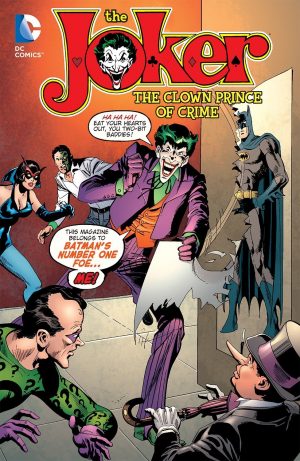Review by Frank Plowright
This black and white selection takes the Justice League from early 1968 to late 1970, with Denny O’Neil the primary guiding hand. It’s not good.
Then again, not much of Volume Three was good either, and that was down to Gardner Fox. Fox, however, experiences a creative renaissance over his final few stories. None of them are masterpieces, but he prioritises his writing strengths rather than attempting to fit with styles of the times that he’s patently uncomfortable with. There’s no denying Fox’s ability to construct an intriguing mystery, and that’s what he serves up. Readers will want to know why all JLA members are masquerading as Green Arrow, and why a murder from 25 years previously is now important. Even his final teaming of the Justice League with the Justice Society shows more spark than the previous few, although the idea of Robin as an adult doesn’t have the same impact now that it did then.
Conversely, the first time round at least, the annual teaming is one of the few bright spots of O’Neil’s Justice League, featuring a quirky, depressive alien as an existential threat. By the time of his second JLA/JSA outing O’Neil had pretty well given up.
O’Neil obviously recognised the Justice League stories were formulaic, too gimmicky and a one personality fits all approach kept them mired in the past. Unfortunately, though, he throws the baby out with the bathwater in addressing the problems. His Justice Leaguers do have different personalities, although 1970s dialogue and attitudes have dated poorly, especially the patronising of the only woman included, Black Canary. The introduction of real world problems was an award-winning success in Green Lantern, but shoehorning them into Justice League leads to a succession of dull stories. Even when there’s a strong concept, such as the Justice League being betrayed by one of their own or why the Martian Manhunter’s not been seen for so long, O’Neil’s primary seasoning consists of bickering, melodrama and a lack of subtlety.
Early on there’s the transition between Mike Sekowsky, the artist who’d drawn the first eight years of Justice League comics to Dick Dillin, whose run would be unbroken for a decade, and Dillin never looked better than when trying to bring some life to these stories. Sympathetic inking from Sid Greene and Joe Giella helps, but the dynamism of the layouts is down to Dillin who brings the action to life.
While some ideas are good, barely any of the stories resulting from them are worth revisiting.
The final 25% of this collection is available in colour in Justice League: The Bronze Age Volume 1, where at least it’s accompanied by some cheerier reading. That’s not the case for the earlier colour hardbacks Justice League Archives Volume 8 and Volume 9. O’Neil’s final Justice League writing is found in Volume Five.
